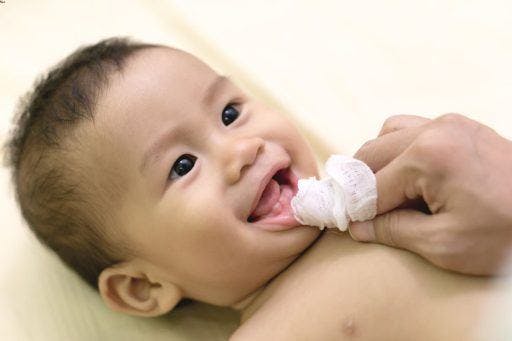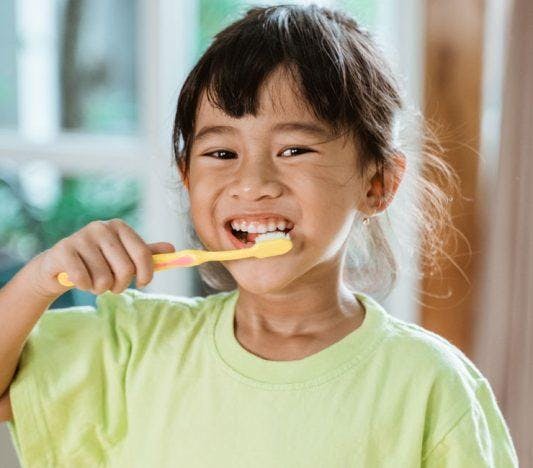How time flies! It seems like only yesterday when you were waking up at ungodly hours to tend to your teething tots. Now that you’re past all the crying spells, you face another issue: early childhood caries. Also called tooth decay or cavities, it’s “the most widespread non-communicable disease,” according to the World Health Organization (WHO). And it’s a “major public health problem globally,” affecting up to 4 in 10 children in Australia and Singapore.
Did you know early childhood cavities can develop even before your child reaches one year old? While their baby teeth will eventually fall off, preventing tooth decay in kids is paramount to the health of their permanent teeth. Below, find tips to protect your brood from the sneaky menace of cavities.
What Causes Early Childhood Dental Caries?

Before diving into how to safeguard your child’s smile, first, learn what causes caries. This oral health issue results from a complex interplay of factors, which triggers the overpopulation of the bacteria Streptococcus mutans in the mouth. These microorganisms are notorious for producing acids that attack the pearl-like surface of the teeth called enamel.
However, bacteria alone can’t take all the blame. WHO confirms: “Dental caries develops when bacteria in the mouth metabolise sugars to produce acid that demineralises the hard tissues of the teeth (enamel and dentine).” According to the FDI World Dental Federation, those sugars can come from intrinsic sugars incorporated within fruits, vegetables, and milk. Or, they can be free sugars, like those naturally present in honey, syrups, and fruit juices or those added to foods and beverages by the manufacturer. “Without sugars, dental caries does not occur,” emphasises the FDI.
“Early childhood caries often begin[s] as white spot lesions on the upper maxillary incisor teeth,” explains a study published by the Journal of Primary Health Care. Parents or guardians can identify these by lifting their child’s lips and checking for “areas that appear whiter than the surrounding enamel, or for brown discolouration and or cavitations.”
How to Prevent Early Childhood Dental Caries
Treating dental caries in children is a challenge, not to mention costly. Extracting a decayed tooth can also be a frightening experience for your child. Plus, prematurely removing baby teeth can lead to permanent teeth erupting crookedly.
So, prevention is the name of the game. Here’s how you can help provide your child with the best defence against cavities.
Use the right amount of toothpaste.

The Australian Institute of Health and Welfare recommends wiping children’s teeth or gently brushing them as soon as they erupt. Parents can introduce toothpaste from 18 months of age. However, it’s crucial to follow the recommended dosage guidelines. Dentists recommend using a toothpaste amount equivalent to a rice grain for children under three years old and a pea-sized portion for ages three to six.
No bottles before bed.
Some refer to childhood dental caries as baby bottle tooth decay for a solid reason. One Dental Journal study reveals that frequent bottle-feeding increases the chances of tooth decay in children. This is because when you put your child to bed with a bottle of formula, the sugar in milk lingers inside the mouth, allowing bacteria to invade the enamel as the baby sleeps.
To mitigate the risk of cavities, feed your little one during mealtimes. If they need to eat at night, make sure to clean their mouth and teeth afterwards. Giving them a pacifier whenever they’re fussy also helps, but don’t dip it in honey or jam.
Avoid sharing utensils.

If you’re dealing with dental caries, chances are you’ll pass it along to your offspring. Remember the acid-producing bacteria? They don’t occur magically, and babies aren’t born with them. Research shows that mums (more so than dads) transfer these microorganisms from kissing their child on the mouth and eating from the same spoon.
For parents, you can reduce the transmission of bacteria by maintaining good oral hygiene. Refrain from sharing the same utensils and toothbrushes with your kids. And, please, don’t let them stick their hands inside your mouth.
Choose alternatives to their sweet snacks.
In a perfect world, children would prefer munching on veggies rather than lollies. But in reality, sweets hold an undeniable allure for these young foodies. Unfortunately, forbidding them from eating candies and chocolates only makes them crave these treats even more. So, your best approach is to offer them healthier (but just as yummy!) alternatives.
Some ideas you can try are frozen fruit pops, trail mix, carrots and dips, and smoothie bowls. Snacks made from unsweetened dairy products like cheese and yoghurt are also good options. Remember this recommendation from the FDI: “For pre-school and young children, free sugars intake should be proportional to that of teenagers, about 30 g per person per day.”
Help them brush their teeth.

When teaching your kids how to prevent early cavities, nagging them to brush and floss is simply not enough. In most cases, they lack the coordination and patience to hold the toothbrush at the right angle and move it thoroughly around their mouths. So, lend a helping hand and guide them in proper brushing techniques.
Schedule dental checkups twice a year.
The Australian Dental Association advises parents to take their children to the dentist when their first tooth emerges and twice a year thereafter. These checkups help identify potential issues like dental caries at an early stage. Plus, every visit to the dentist allows your child to overcome their fear of the unknown and avoid developing dental anxiety.
A healthy relationship with an oral health care provider also prepares your kiddo for a brighter future. They’ll be more proactive in keeping their teeth in tip-top shape. And they likely won’t hesitate to undergo orthodontic treatments, like braces or ClearCorrect aligners, once they’re older.
Preventing issues like dental caries in children takes discipline, but it’s worth the effort. Instil good oral hygiene habits from a young age to set the foundation for a lifetime of healthy smiles!
References:
Children’s oral health. (2022). Centers for Disease Control and Prevention.
Damle, S. G., Yadav, R., Garg, S., Dhindsa, A., Beniwal, V., Loomba, A., Chatterjee, S. (2016). Transmission of mutans streptococci in mother-child pairs. Indian Journal of Medical Research, 144(2), 264-270.
Early childhood caries: a New Zealand perspective. (2014). Journal of Primary Health Care.
Gao, X. L., Hsu, C. Y. S., Loh, T., Koh, D., Hwamg, H. B., Xu, Y. (2009). Dental caries prevalence and distribution among preschoolers in Singapore. Community Dent Health, 26(1), 12-7.
Oral health and dental care in Australia. (n.d.). Australian Institute of Health and Welfare.
Preventing tooth decay in children and teenagers. (2020). National Library of Medicine.
Rizal, M. F., Sutadi, H., Bachtiar, B. M., Bachtiar, E. (2010). The frequency of bottle feeding as the main factor of baby bottle tooth decay syndrome. Dental Journal, 43(1), 44-48.
Sugars and dental caries. (2016). FDI World Dental Federation.
Sugars and dental caries. (2017). World Health Organization.
Telgi, R. L., Yadav, V., Telgi, C. R., Boppana, N. (2013). In vivo dental plaque pH after consumption of dairy products. General Dentistry, 61(3), 56-9.



